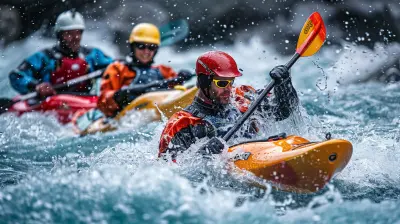How to Find the Right Surfboard for Your Skill Level
22 May 2025
When it comes to surfing, one of the most important decisions you’ll make (besides deciding to get up at the crack of dawn for the perfect wave) is choosing the right surfboard for your skill level. Whether you're a complete newbie or someone who's been riding waves for years, the right board can make all the difference between wiping out or riding the perfect wave.
But here’s the thing: there are so many different types of surfboards out there! It’s like walking into a candy store full of delicious options, and not knowing which one to pick. Should you go longboard or shortboard? What about fish boards or funboards? And how does your skill level factor into all this?
Relax, we’ve got you covered. In this article, we’re going to break it all down for you. By the end, you’ll know how to find the right surfboard that suits your skill level and helps you maximize your time in the ocean.
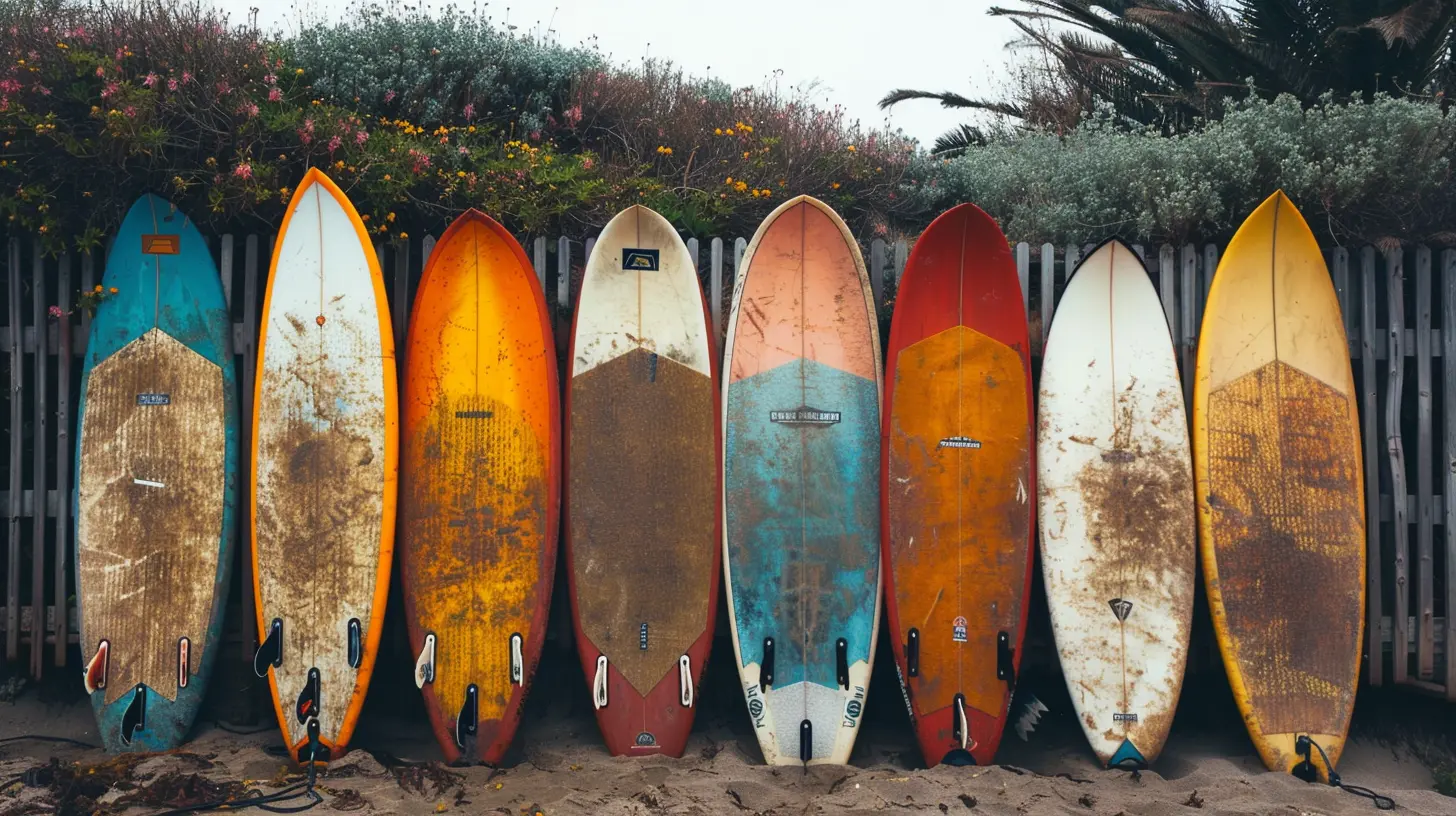
Why Surfboard Selection Matters
First things first, why does choosing the right surfboard matter? Well, think about it this way: would you wear flip-flops to run a marathon? Probably not. You want gear that suits the activity and your abilities. The same goes for surfing.The right surfboard can help you:
- Catch more waves
- Improve your technique
- Gain confidence in the water
- Avoid unnecessary frustration (trust me, wiping out again and again isn’t fun)
On the flip side, the wrong board can make surfing feel like you're fighting against the ocean rather than flowing with it. So, let’s dive into how you can pick the right board based on your current skill level.
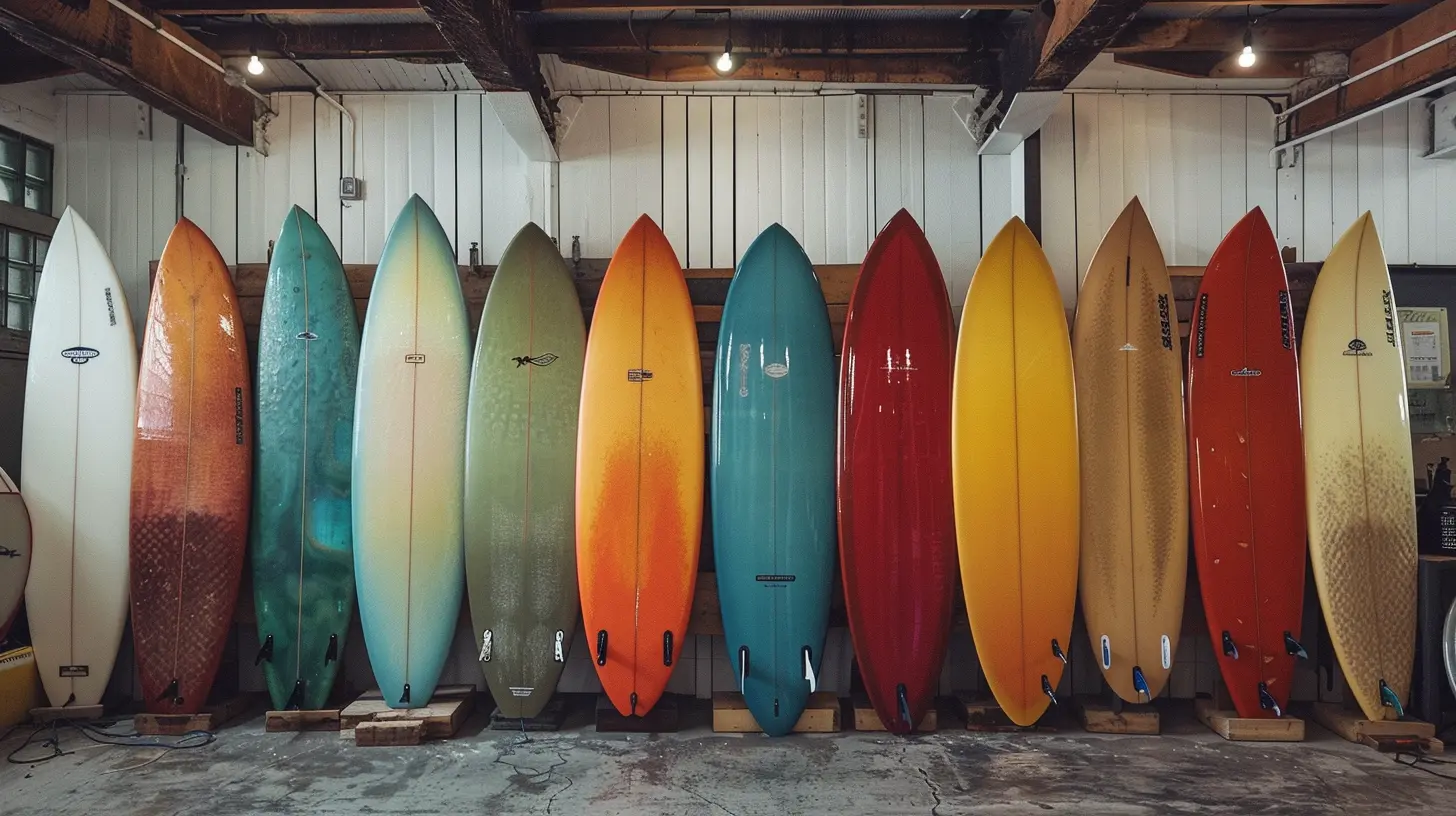
Beginner Surfers: Go Big or Go Home
Characteristics of Beginner Surfboards
If you’re just starting out, the key is stability. You want something that’s going to make it as easy as possible for you to catch waves and stand up on the board. So, what does that mean in terms of actual surfboard characteristics?For beginners, you’re looking for:
- Length: Longer boards are easier to balance on, making them perfect for learning. Aim for a board that's at least 8 feet long.
- Width: Wider boards offer more stability. A board with a width of around 22 inches or more will give you enough surface area to stay steady.
- Thickness: Thicker boards have more volume, which means they float better and are easier to paddle.
Ideal Type of Board for Beginners: Longboards
If you’re new to surfing, go with a longboard. Longboards are the go-to option for beginners because they provide the stability and paddle power you need to catch your first waves.Picture this: You’re out on the water, paddling your heart out. The wave starts to pick you up, and you pop up to your feet. Thanks to the longboard’s length and volume, you’re able to stand up with ease and ride the wave all the way to shore. Sounds dreamy, right?
A longboard, typically 8 to 9 feet in length, will give you the best chance of success as you learn the basics. And remember, surfing is a lot about confidence. A longboard will help you build that confidence faster than smaller, more advanced boards.
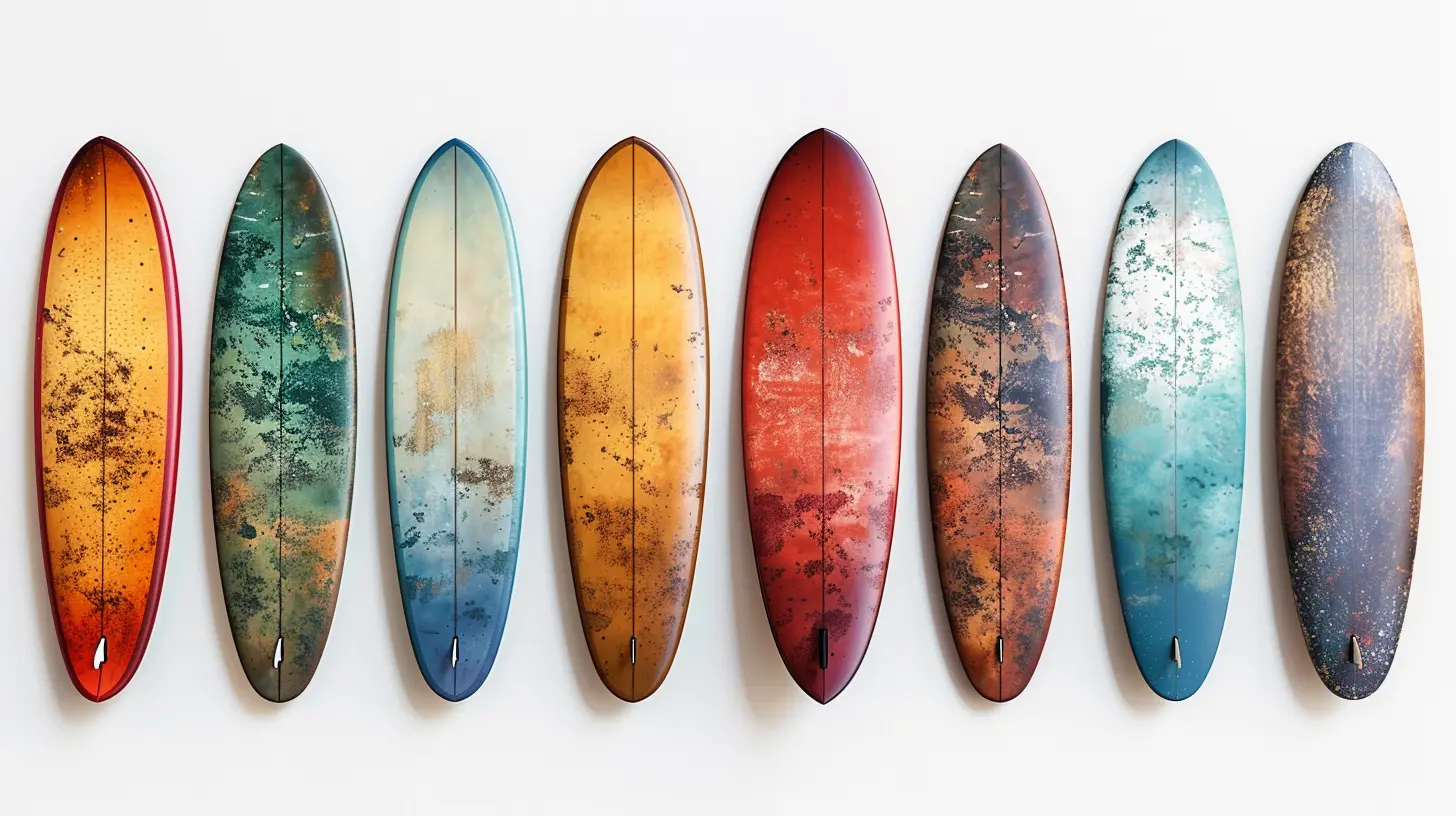
Intermediate Surfers: Ready for More Maneuverability
Characteristics of Intermediate Surfboards
So, you’ve been surfing for a while now. You’re catching waves more consistently, and you’re comfortable paddling out into deeper water. Maybe you’ve even tried to pop a few turns here and there. Congrats! You’re officially an intermediate surfer.Now, it’s time to look for a board that offers more maneuverability while still giving you some stability (you’re not Kelly Slater just yet, after all).
For intermediate boards, look for:
- Length: Slightly shorter than a beginner board, around 7 to 8 feet.
- Width: Narrower than a beginner board, typically around 19-22 inches.
- Thickness: Moderate thickness. You don’t want a board that’s too thick because it’ll be harder to maneuver, but you still need some volume to help with paddling and balance.
Ideal Type of Board for Intermediates: Funboards or Fish Boards
For intermediate surfers, funboards and fish boards are excellent choices.- Funboards: These are a hybrid between longboards and shortboards. They’re shorter than longboards, making them more maneuverable, but they still have enough volume to make paddling easier. If you’re looking to practice your turns and start moving down the face of the wave, a funboard is a solid option.
- Fish Boards: Fish boards are another great option for intermediate surfers. They’re shorter and wider, which makes them super fast in smaller waves. Plus, they have a unique tail design (often called a swallowtail) that helps with turning. If you want a board that’s fast and agile but still forgiving, the fish board is your friend.
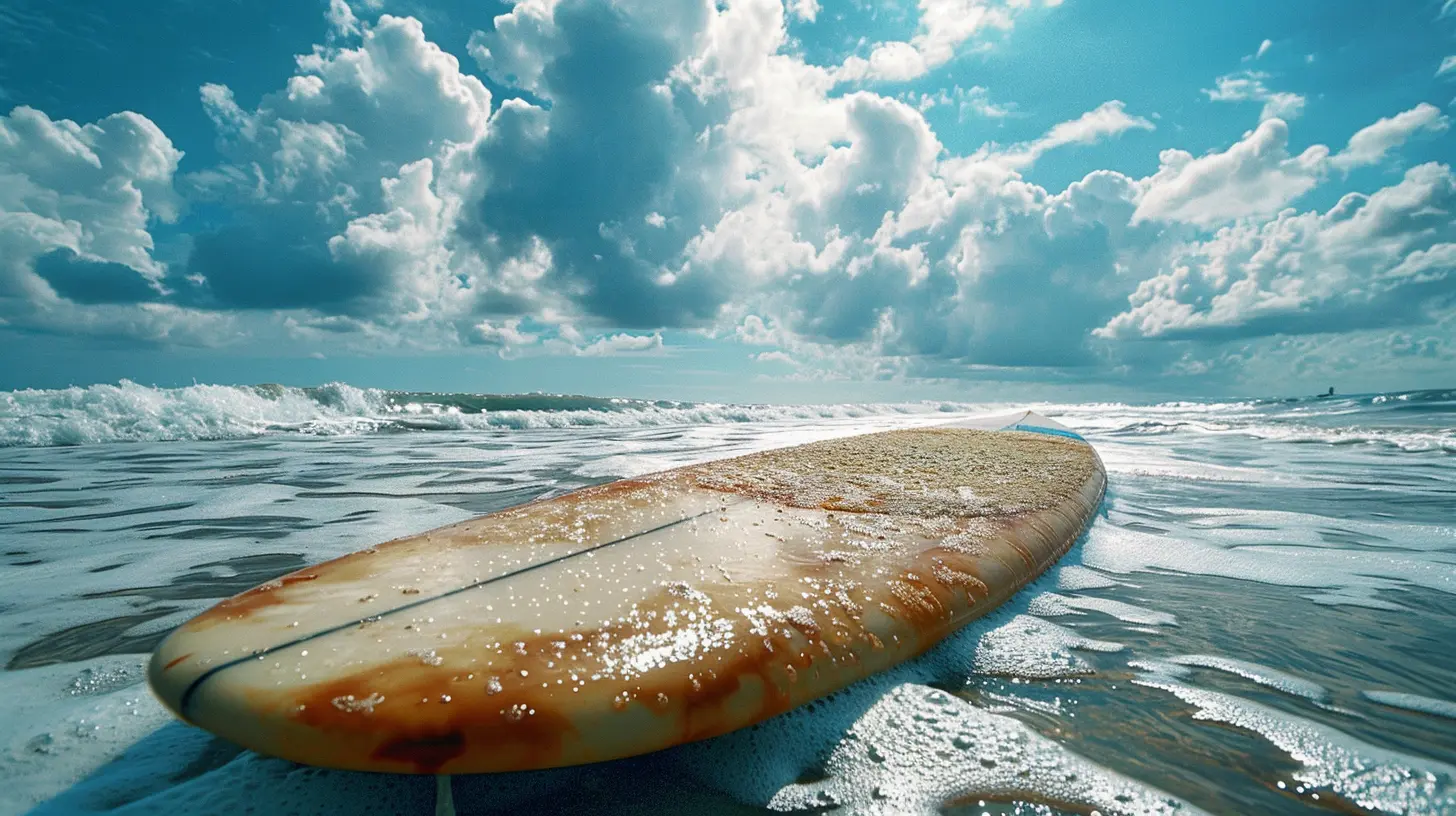
Advanced Surfers: Time to Shred
Characteristics of Advanced Surfboards
At this point, you’ve got the basics down, and you’re looking to push your limits. You want something that’s fast, agile, and responsive.For advanced boards, you'll need:
- Length: Shorter boards, typically 6 to 7 feet.
- Width: Narrower boards, usually around 18-20 inches.
- Thickness: Thinner boards. These boards don’t have much volume, making them lighter and easier to maneuver, but they’re also more challenging to paddle.
Ideal Type of Board for Advanced Surfers: Shortboards
If you’re an advanced surfer looking to carve, snap, and shred waves, a shortboard is your go-to choice. Shortboards are highly maneuverable and designed for high-performance surfing.But be warned: shortboards are not forgiving. If your paddling isn’t on point or you’re not ready for the speed and power of a shortboard, you’re going to struggle. But if you’re an experienced surfer who wants to push your skills, a shortboard will give you the responsiveness and control you need to tackle steep, fast waves.
Choosing the Right Board for Different Wave Conditions
Now that you know what type of board is best for your skill level, let’s talk about something else that plays a crucial role in your board choice: wave conditions. The type of waves you’ll be surfing can influence which board will work best for you on a given day.Small Waves
For smaller waves, you want a board that has more volume so that you can generate speed even when the waves aren’t pushing you much. Longboards, funboards, and fish boards are ideal for smaller surf. These boards provide more float and paddle power, helping you catch waves that aren’t as powerful.Big Waves
For bigger, faster waves, you’ll need a board that’s built for speed and maneuverability. Shortboards are the best option for advanced surfers looking to ride larger waves. These boards allow you to drop in on steep waves and make quick, sharp turns.Choppy Conditions
If the waves are messy or the water is choppy, a board with more stability and volume, like a funboard or longboard, can help you navigate through the rough conditions. In choppy water, your goal is to stay balanced and catch the cleaner waves, and a board with more surface area will help you do just that.
The Importance of Trying Different Boards
Here’s a little secret: even though there are general guidelines for what boards work best for different skill levels, there’s no one-size-fits-all answer. Surfing is such a personal experience that what works for one person might not work for another. That’s why it's important to try out different boards!If you can, rent or borrow boards of different sizes and shapes to see what feels best for you. You might find that you love the feel of a fish board even as a beginner, or maybe you’ll realize that a longboard is your forever board, no matter how advanced you become.
Don’t be afraid to experiment and find what suits your style and the type of waves you’re riding. Surfing is all about flow, and finding the right board will help you tap into that flow and ride with confidence.
Conclusion: Find Your Perfect Match
Finding the right surfboard for your skill level is key to enjoying your time in the water. Whether you're just starting out or you've been surfing for years, there's a board out there that's perfect for you.Beginners should start with a longboard for stability, intermediates will love the versatility of funboards or fish boards, and advanced surfers can push their limits with a shortboard. Remember to take into account the wave conditions and don’t be afraid to try different boards until you find the one that feels just right.
Now, grab that board, head to the beach, and have fun out there!
all images in this post were generated using AI tools
Category:
Sports EquipmentAuthor:

Uziel Franco
Discussion
rate this article
3 comments
Patience Adkins
In the dance of waves, where dreams collide, Choose your board, let your spirit glide. From novice whispers to expert’s roar, The perfect ride awaits on the shore. Embrace the ocean, let your soul soar!
June 6, 2025 at 4:06 AM

Uziel Franco
Thank you for capturing the essence of surfing! Choosing the right board truly enhances the experience and aligns with your journey on the waves.
Juliana Potter
“Choosing a surfboard? Just paddle and let the waves decide!”
May 30, 2025 at 4:39 AM

Uziel Franco
While embracing the waves is important, selecting the right surfboard tailored to your skill level can significantly enhance your experience and progress.
Isabelle Clayton
Great article! I appreciate the detailed tips on selecting the right surfboard based on skill level. Understanding the different types of boards and their features can make a significant difference in performance and enjoyment. Looking forward to applying this advice during my next surf session!
May 24, 2025 at 3:05 AM

Uziel Franco
Thank you! I'm glad you found the tips helpful. Enjoy your next surf session!
![The Making of a Legend: How [Player Name] Became a Household Name](/pictures/blog/small/the-making-of-a-legend-how-player-name-became-a-household-name_1.webp)


